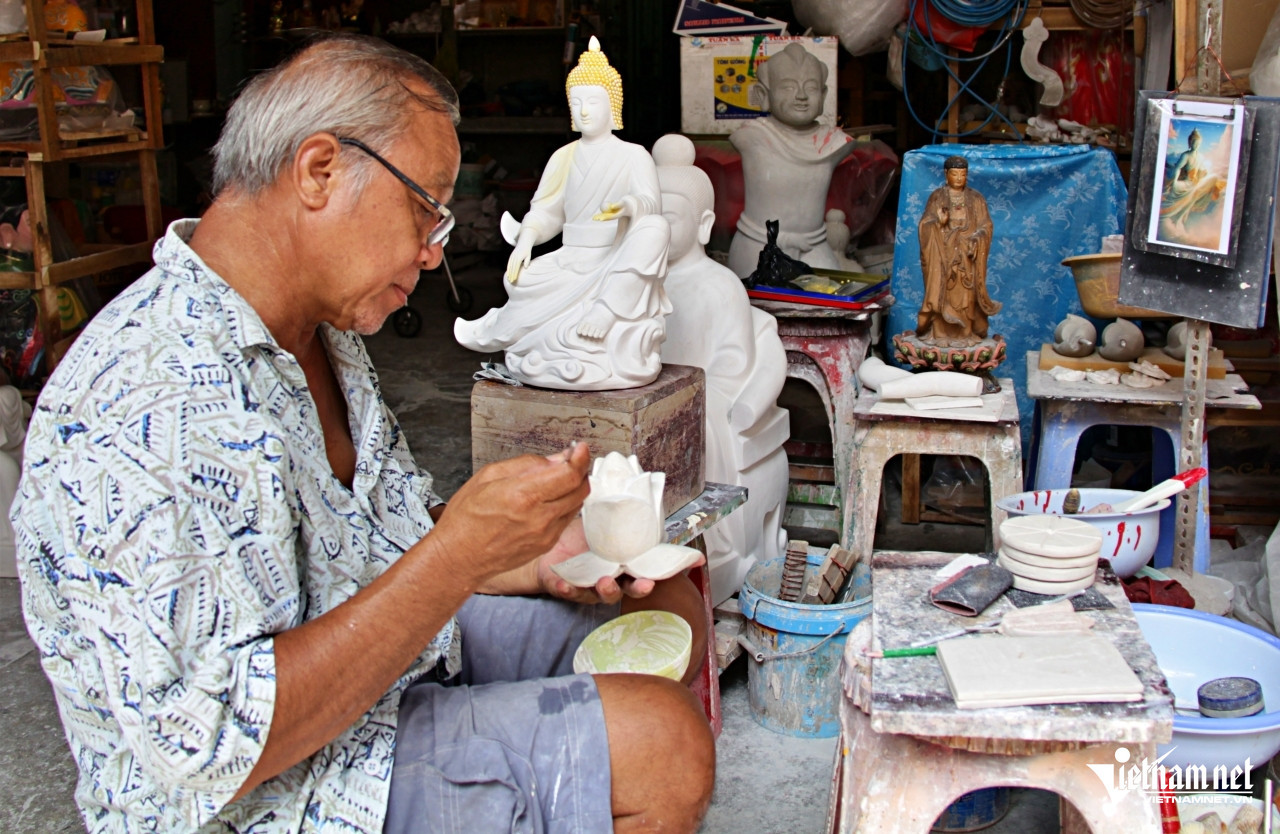
Deep in the alley under Ong Buong bridge pier in District 6, HCM City is a village of artisans practicing traditional crafts, called ‘xom chua’ (pagoda hamlet) or ‘xom tuong Phat’ (Buddha statue village).
The village has a special name because several families have been making Buddha statues for three generations. Local people don’t know when the craft village was established but only know that the most famous artisans are the third generation of the families famous for making statues.
There are about 10 facilities in the hamlet making statutes.
Mai Van Kiet, 60, the son of Artisan Mai Van Lai, said the craft of making Buddhas may have originated from the Giac Hai Pagoda nearby.
In his childhood, Kiet heard that the GiacHai Pagoda’s Monk wanted to have statues of Buddha to worship, so he carved a Buddha statue from jackfruit wood and put it in the main hall. After that, locals began learning how to sculpt statues.
“At that time, my grandfather sculpted Buddha statues with jackfruit wood, because the wood was not too hard and could be easily carved. After completing a statue, he invited the monk at Giac Hai Pagoda to come and see if the statues could meet his requirements,” Kiet said.
“Later, the next-generation craftsmen shifted to make Buddha statues with cement and gypsum. I am a third-generation craftsman. So the career of making Buddha statues has existed for 100 years,” he added.
Meticulously applying a special solution to a statue that had just been taken out of a mold, Tuan, 44, said making handmade Buddha statues is a difficult job because most craftsmen have to learn while doing and accumulate experience step by step.
In general, there are many different stages to create a statue. Of these, creating a frame is an extremely important stage. Only when successfully setting up a standard frame with proper sizes and styles will the next stages go smoothly. Meanwhile, drawing eyes for statues, the final stage, is believed to be the most difficult stage.
“Whether a statue has a spirit or not depends on the eye drawing stage. So, when drawing the eyes, craftsmen must put all their emotions and soul into the work,” said Tuan.
The workers
The 100-year-old village has become one of a few traditional craft villages in HCM City. Though the number of facilities in the village has decreased, the village still produces a large number of different kinds of statues in varying sizes to order.
Though craftsmen have to follow common principles when building statues, each craftsman has his own characteristics.
As these are Buddha statures, which bear spirituality, local craftsmen have to follow certain principles. They must be persons who are kind, with a pure virtuous soul and a gentle personality.
Many local workers study and have understanding about Buddhism. Some of them regularly say their prayers and pray to Buddha.
“The craftsman's temperament will determine the spirit and soul of the statue,” Kiet explained.
The look of statues depends a lot on the eye drawing stage. If workers are good natured and always think of positive things, the eyes they draw are gentle and righteous. By contrast, if craftsmen don’t have a pure mind, and if they look miserable, the eyes and the face of statues look sad or even aggressive.
Having experience and being the descendants of famous Buddha statue creators, the artisans in the village dare not recognize themselves as good workers or craftsmen. They just say they love their career because of a predestined affinity, and therefore, try their best to preserve the traditional career.
The products sell from a few million dong to tens of millions of dong.
"More than a job, I take this job as a way to do good deeds. Because Buddha statues, God statues ... will be worshipped by people, not just one or two persons. The statue can even be worshiped by hundreds, thousands of people. Therefore, we always remind ourselves to work with all our heart, spiritual faith, and pride.”
Ha Nguyen